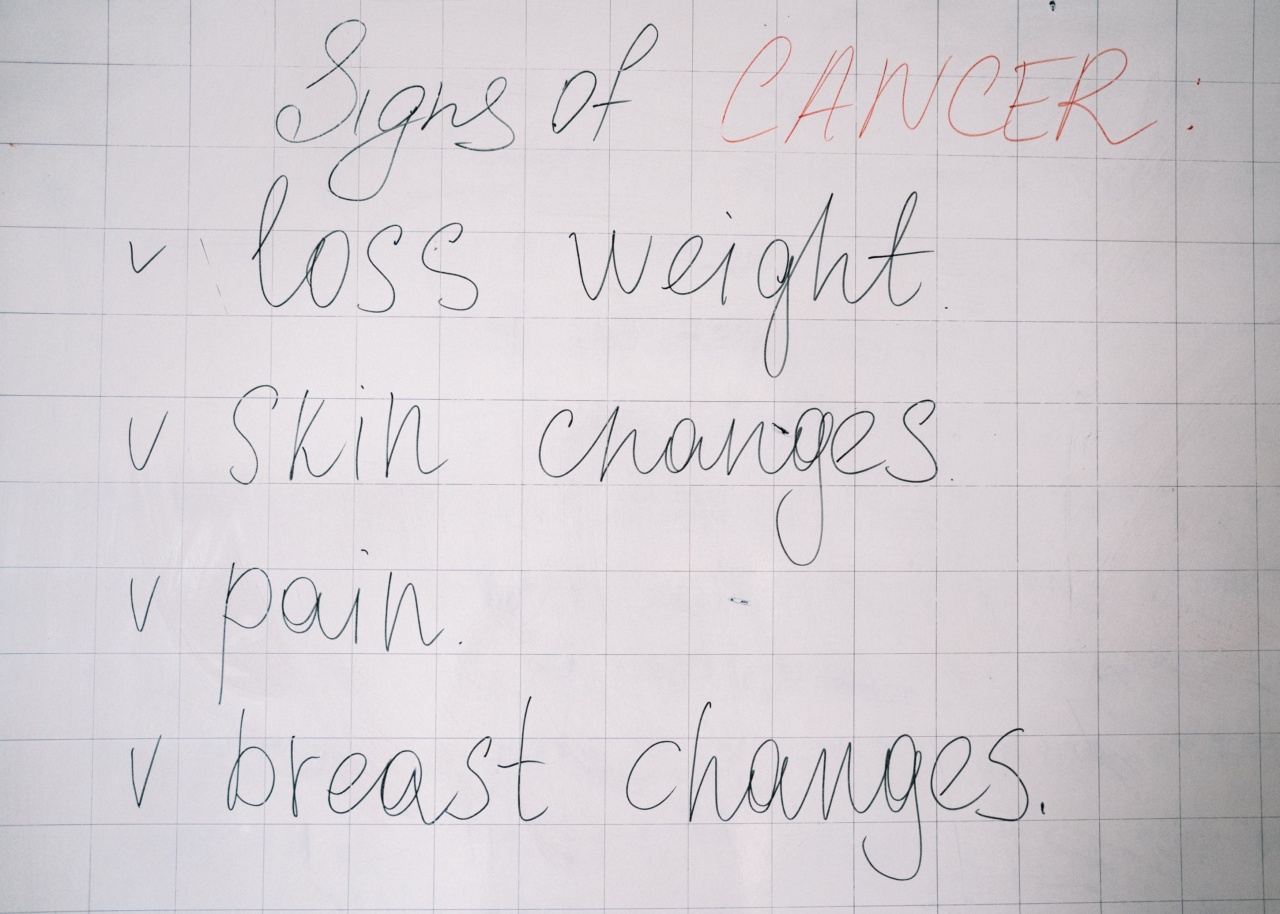Leukemia is a type of cancer that affects the blood and bone marrow. It is characterized by the rapid production of abnormal white blood cells, which interfere with the production of normal blood cells.
This ultimately leads to a weakened immune system and an increased risk of infection. Leukemia can be classified into four main types: acute lymphoblastic leukemia (ALL), acute myeloid leukemia (AML), chronic lymphocytic leukemia (CLL), and chronic myeloid leukemia (CML).
In this article, we will discuss the symptoms and risk factors associated with leukemia to help you better understand this condition and potentially identify it at an early stage.
Signs and Symptoms of Leukemia
Leukemia symptoms can vary depending on the type and stage of the disease. Some common signs and symptoms include:.
1. Fatigue and Weakness
Persistent fatigue and weakness are common symptoms of leukemia.
As abnormal white blood cells multiply and disrupt the production of normal blood cells, your body may struggle to deliver oxygen and nutrients to your tissues, leading to fatigue and weakness.
2. Frequent Infections
Leukemia weakens the immune system, making you more susceptible to infections. You may experience recurrent infections, such as respiratory infections, urinary tract infections, and skin infections.
3. Easy Bruising and Bleeding
Leukemia can cause a decrease in platelets, which are responsible for blood clotting. As a result, you may notice that you bruise more easily or experience prolonged bleeding from minor injuries or cuts.
4. Unexplained Weight Loss
Rapid and unexplained weight loss can be a symptom of leukemia. Cancer cells can disrupt the normal functioning of the body, leading to unintended weight loss.
5. Bone and Joint Pain
Leukemia can cause pain in the bones and joints. As abnormal white blood cells accumulate in the bone marrow, they can cause inflammation and discomfort.
6. Enlarged Lymph Nodes
Leukemia can cause the lymph nodes to become swollen and tender. You may notice lumps under the skin in areas such as the neck, armpits, and groin.
7. Anemia
Leukemia can lead to a decrease in red blood cells, resulting in anemia. Anemia can cause symptoms such as pale skin, shortness of breath, and fatigue.
8. Excessive Sweating, Especially at Night
Some individuals with leukemia may experience excessive sweating, particularly during the night. This symptom is often accompanied by other symptoms, such as fever and weight loss.
Risk Factors for Leukemia
While the exact cause of leukemia is unknown, several risk factors have been identified. These include:.
1. Genetic Factors
Some people may have an inherited predisposition to developing leukemia. Certain genetic abnormalities, such as Down syndrome, can increase the risk.
2. Exposure to Radiation
Prolonged exposure to high levels of radiation, such as that experienced during radiation therapy for previous cancers or nuclear accidents, can increase the risk of developing leukemia.
3. Chemotherapy
Although chemotherapy is commonly used in the treatment of cancer, it can damage healthy cells and increase the risk of developing leukemia as a secondary cancer.
4. Smoking
Smoking has been linked to various types of cancer, including leukemia. Chemicals present in tobacco smoke can enter the bloodstream and affect the bone marrow, increasing the risk of developing leukemia.
5. Family History
If there is a history of leukemia in your family, your risk of developing the disease may be higher. However, most cases of leukemia occur in individuals with no family history of the disease.
6. Certain Blood Disorders
Individuals with certain blood disorders, such as myelodysplastic syndrome (MDS), polycythemia vera, and essential thrombocythemia, have an increased risk of developing leukemia.
Early Detection and Prevention
Early detection of leukemia can significantly improve treatment outcomes.
If you experience persistent symptoms that are concerning, such as unexplained weight loss, frequent infections, or unusual bleeding, it is important to consult with your healthcare provider for further evaluation and diagnosis.
Prevention strategies for leukemia are not well-established due to the unclear causes of the disease.
However, adopting a healthy lifestyle, avoiding exposure to harmful chemicals and radiation, and quitting smoking can reduce the risk of developing various types of cancer, including leukemia.
In conclusion, leukemia is a type of cancer that affects the blood and bone marrow. Recognizing the symptoms and understanding the risk factors associated with this condition is crucial for early detection and prevention.
If you experience any persistent symptoms or have concerns about your risk of developing leukemia, consult with your healthcare provider for further evaluation and guidance.





























